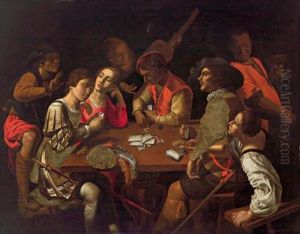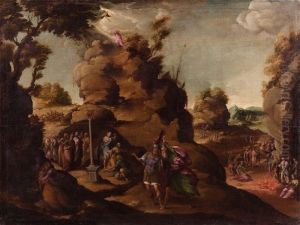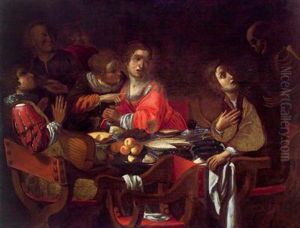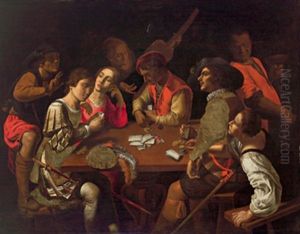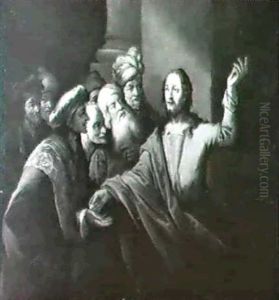Domenico Carpinoni Paintings
Domenico Carpinoni was an Italian painter of the late-Renaissance period, active mainly in the Republic of Venice and its territories, particularly in the town of Clusone in the province of Bergamo. Born in 1566 in Clusone, Carpinoni was a contemporary of the more renowned Italian painters like Caravaggio and the Carracci brothers, though he did not achieve the same level of fame as these artists during his lifetime or posthumously.
Carpinoni's artistic style was influenced by Venetian painting, which is characterized by its use of vivid color and emphasis on light. His works display a blend of the Venetian coloristic tradition and the naturalistic approach to subjects, which was becoming increasingly popular during his time due to the influence of Caravaggio. Despite these influences, Carpinoni developed a personal style that was noted for its devotional quality and its focus on religious subjects.
Carpinoni's oeuvre mainly consists of altarpieces and religious paintings, which often featured scenes from the life of Christ, the Virgin Mary, and the saints. His work was appreciated for its piety and its ability to engage the viewer emotionally, a quality that was in high demand for religious commissions during the Counter-Reformation, when the Catholic Church was emphasizing art as a means of inspiring faith and devotion among the congregation.
Details about Carpinoni's life and training are scarce. It is believed that he may have been a pupil of the painter Giovanni Battista Moroni, who was also from the Bergamo area and known for his realistic portraiture. This possible connection might explain Carpinoni's skillful rendering of the human figure and the psychological depth he gave to his characters.
Domenico Carpinoni's works can still be seen in churches and collections in and around Clusone, where he spent the majority of his career. Although he did not gain the same historical prominence as some of his contemporaries, his contributions to the art of his region and his role in the spread of the Venetian style into the mainland territories of the Venetian Republic are recognized by art historians. He passed away in 1658, leaving behind a body of work that reflects the religious fervor and artistic trends of his time.
